R .DAHAL’SPROSPEROLOGY (A System of Human Activity) Part III PROSPEROLOGY IN PRACTICE
home prosperity desire pricniples of prosperity prosperity in practice 1.Earning, Consumption and Prosperity 2.Labour, Non-labour and Production Costs 3.Balance of Trade 4.Production of Unlike Products 5.Capital & Technology Transfer 6.Increment of Prosperity
Explanation on Principles of Prosperity
1.Earning, Consumption & Prosperity
Poor people want to be rich and rich ones to be richer. Everyone tries to earn more and more. Haves and haves-not are all time realities. Another factor such as consumption has another role in human life. Possibility or capacity of consumption of earnings gives value to richness. A rich person without a possibility or capacity of consumption is no better than a poor one without any time value. Therefore, combination of time value and consumption defines prosperity of a person. Also in this industrial world, the main source of time value of most of the people is their earning in unit time and so we can use earning in unit time as a time value of concerned person.
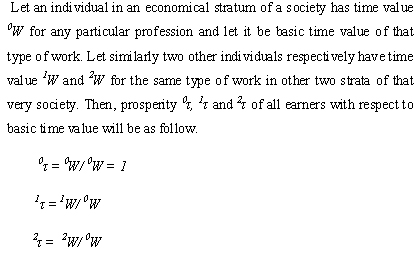
2. Labour, Non-labour and Production Costs
If three workers in three different strata are equally skilled, they will produce equal numbers of items in unit time and labour costs of those
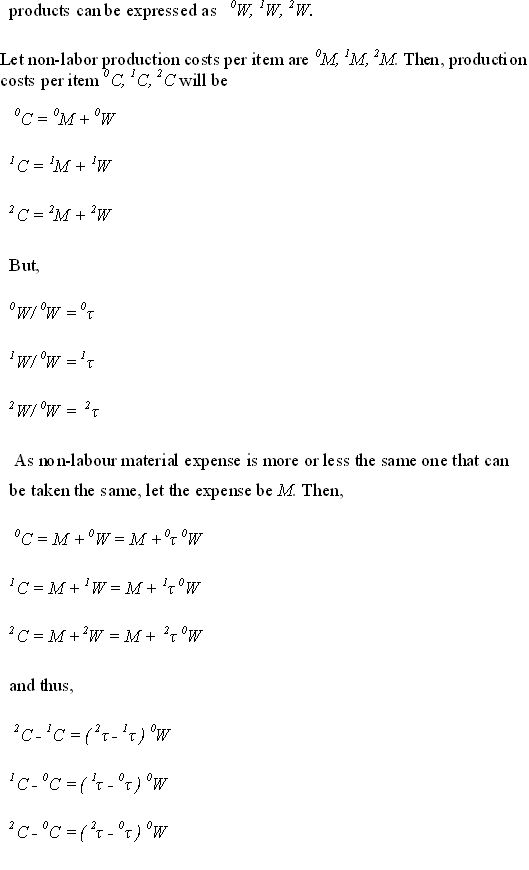
3. Balance of Trade
If the workers trade their products between themselves, there will be loss and gain among themselves. The low earner has to pay more to high earner due to higher prosperity of later one. As higher is the difference of prosperity, higher will be the gain or loss to high and low earner respectively. For above prosperities and production costs

the level of prosperity of former to later one. The highest prosperity will always gain, the lowest will always loose, and in-between prosperities gain or lose on and off as they can sell and buy to whom and from whom. In a normal production and balanced trade market, the least prosperity has no chance of increment its prosperity level.
4. Production of Dissimilar Products
Human need is innumerous and so are human consuming items. Therefore, production is not limited to a single item and so, neither is the trade. Skills required to produce different commodities must be different and so the earning per unit timework must vary according to the skill.
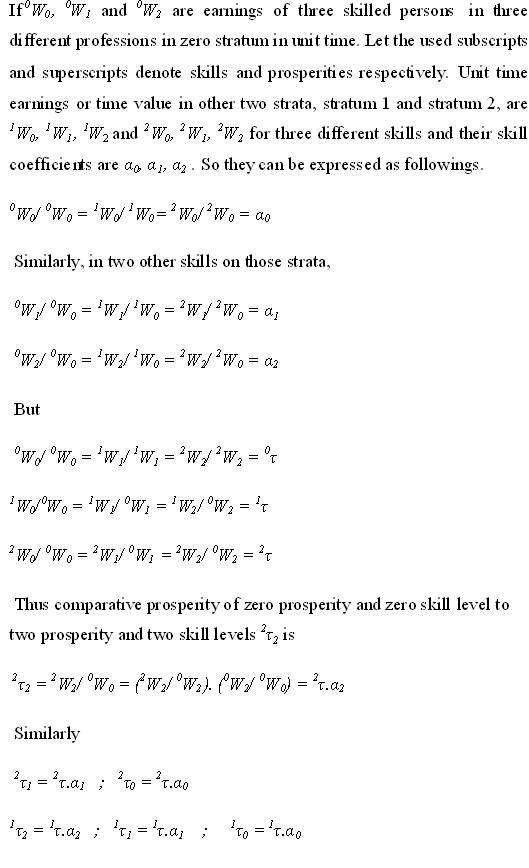
As high technology, high cost proficiency α2 cannot be maintained in low prosperity economy, high prosperity economy has a monopoly in pricing of high tech and high cost production. Let 1C1 and 2C2 are costs of production of two economic strata within one unit time, then
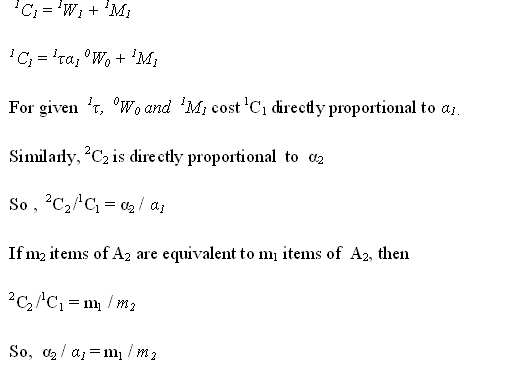
5. Capital and Technology Transfer
In capitalist production system, capital and technology transfer is motivated by profit incentives. Due to sophisticated transportation technology, transfer of raw material is easy and cheap but immigration of cheap labour to prosperous economy is restricted. Hence, capitalists move to less prosperous economy in search of cheap labour. For the sake of profit due to cheap labor, technology is transferred to cheap labour area. Therefore, it is called technology transfer.
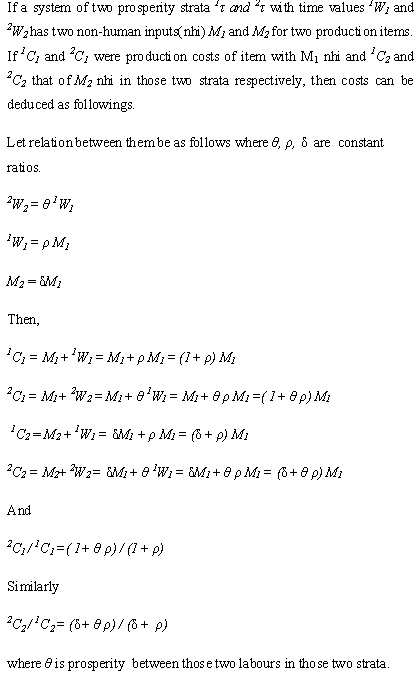

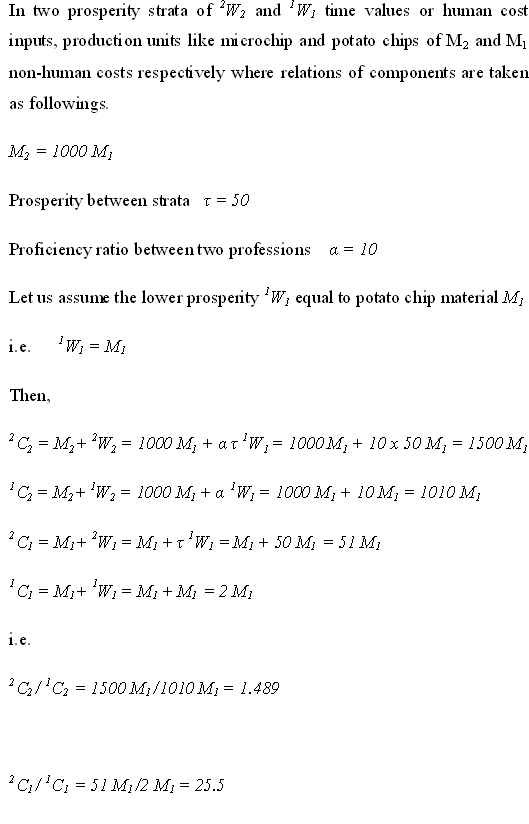
6. Increment of Prosperity
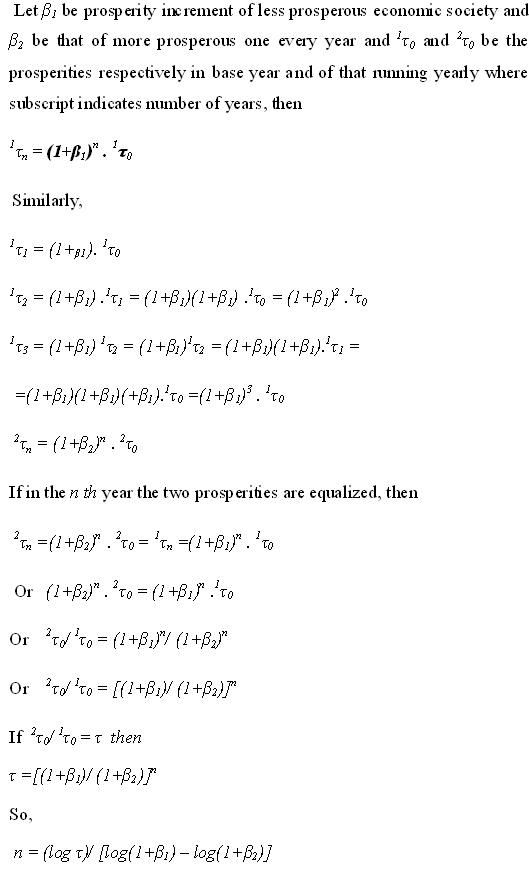
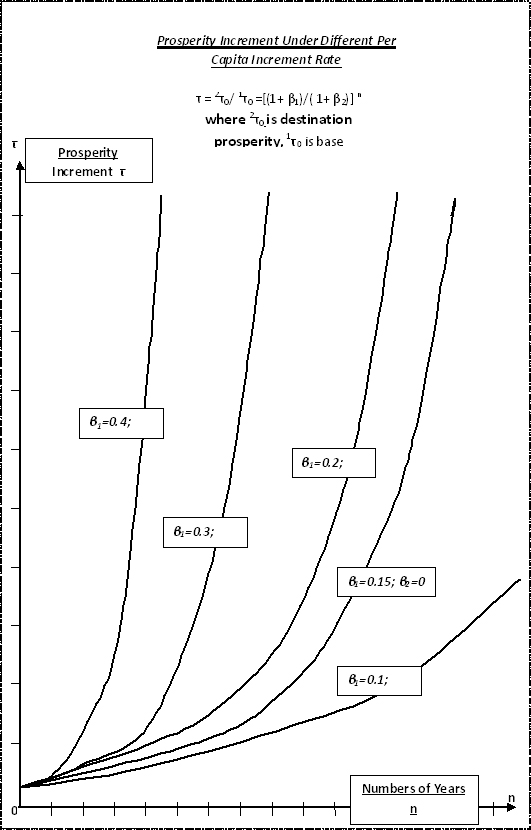
On an economic society, the prosperity can be taken as a per capita income of the society and increment of prosperity as per capita increment of income. The equalization year n can be calculated on these data.